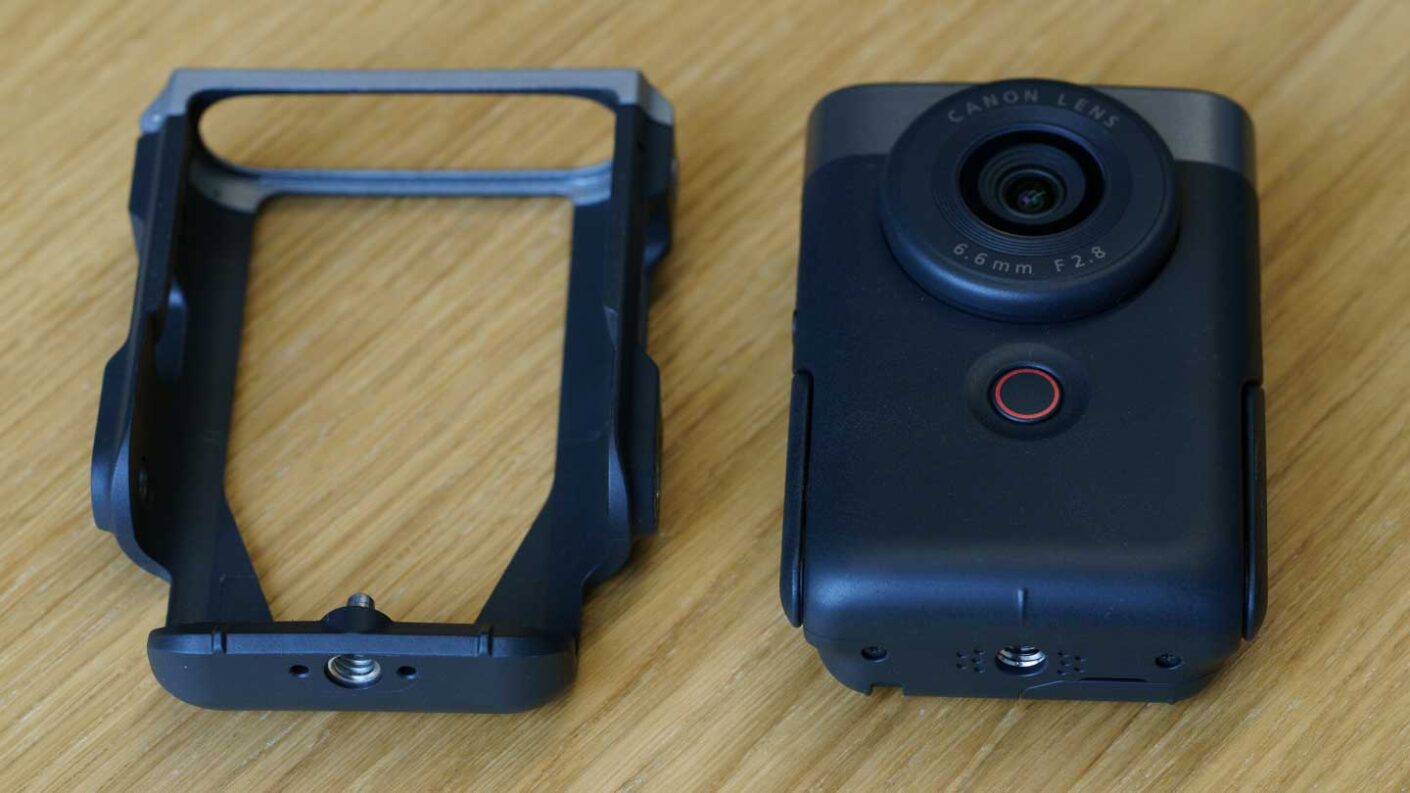Inside the Canon PowerShot V10 is a 1-inch type BSI CMOS sensor similar to the one in the PowerShot G7X Mark III. It can shoot in 14 different aspect ratios to suit a range of platforms and has a total resolution of 30 million pixels. However, it only uses between 15 and 20MP for stills.
Unlike the G7X Mark III, which has a zoom lens with an effective focal length range of 24-100mm, the Canon PowerShot V10 has a fixed lens with an effective focal length of 19mm. This produces a wide angle of view that is ideal for vlogging at arm’s length while the f/2.8 maximum aperture should enable some separation of the subject from its background.
The PowerShot V10 can shoot 4k video at up to 30p with a maximum sensitivity setting of ISO 3200, and Full HD video at up to 60p with a maximum sensitivity setting of ISO 6400. It’s also possible to record for up to an hour at a time.
As you might expect, Canon’s Movie Digital IS onboard and is joined by Auto Level to help produce more stable footage with a level horizon. There’s also a Movie Auto ND filter which can give up to three stops of light reduction. This can be set to ‘off’, ‘auto’ or ‘on’, it’s a useful feature for controlling shutter speed.
Although the PowerShot V10 is designed to be easy to use and has lots of automated features, including a skin smoothing option for video and 14 colour filters, it’s also possible to take control of the aperture and shutter speed and shoot in manual exposure mode.
While the camera is designed to be held upright like a mobile phone, it can detect when it’s being held horizontally and will record landscape orientation video and images.
There’s no viewfinder built into the PowerShot V10 but it has a 2-inch tilting touchscreen that can be flipped up through 180° for viewing from in front of the camera. There’s also a red box that appears around the image on the screen when the camera is recording to make it obvious that the camera is running.
Audio can be recorded via the two comparatively large onboard stereo mics or using an external microphone connected via the 3.5mm stereo jack input. There’s also an electronic wind filter on board but there are optional fluffy windshields available. These are magnetically mounted once sticky magnetic rings are attached around the camera’s onboard mics.
The Canon PowerShot V10 has a microSD slot to accept a card for recording video and stills. It’s also possible to live-stream to YouTube, Facebook or a URL via the Canon Camera Connect app on a smartphone. This app also gives remote control over the camera.
Thanks to UVA/UAC support, the Canon V10 can be used as a webcam via a USB-C connection.



